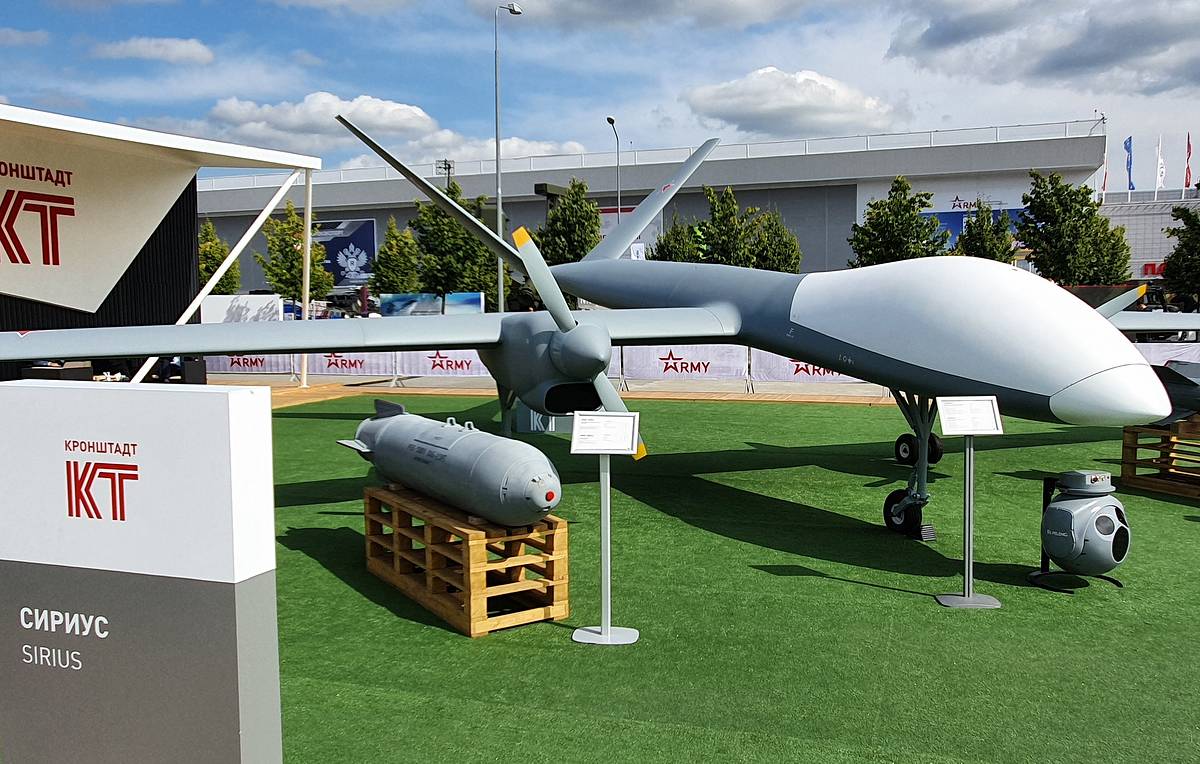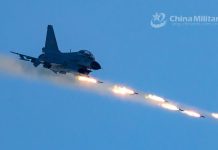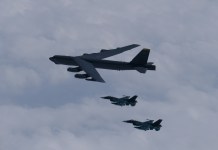Russia’s Sirius Unmanned Aerial Vehicle (UAV), a reconnaissance-strike drone somewhat comparable to the US’s MQ-9 Reaper, was recently spotted undergoing flight tests, indicating the stalled project is being revived.
India, US Military Ties Blossom Under Modi Govt; But Drawbacks Of Alliance With Washington Remain A Stark Reality
Experts have long pointed out how Russia was missing a Medium/High-Altitude Long-Endurance (MALE/HALE)-class combat drone to have been able to attain a significant number of battlefield goals.
Also called the Inokhodets-RU, it has been developed by the St. Petersburg-based Kronstadt Group.
The reconnaissance and strike drone Sirius is a further development of the Orion UAVs and is powered by two turboprop engines, unlike the Reaper’s single powerplant, with a claimed flight duration of approximately 20 hours.
The maximum height is 7000 meters (23,000 feet), with a cruising speed of 180 km/h and a range of 3,000 kilometers, according to Sergei Surovikin, who was quoted on many Russian Telegram groups. Also, various sources claimed that this UAV would be equipped with its own satellite communications system.

The Sirius can carry a total ordnance payload of 300 kg to 400 kg. At the Army-2020 forum, it was displayed with a range of weapons like guided aerial bombs FAB-100 and, KAB-100, OFAB-250.
Some Russian defense bloggers claim the range of weapons also includes guided and unguided air-to-surface missiles (we will definitely see Vikhr-1 under its wing).
How Will it be Used?
How the Sirius might be used in Ukraine and how such platforms benefit Russian operations can be gauged from how American UAVs like MQ-9 Reaper and the RQ-4B Global Hawk helped Ukraine.
Flying south of Crimea over the Black Sea, the aircraft provided real-time Intelligence-Surveillance-Reconnaissance (ISR) on Russian air defense radars, naval deployments, and ground troops with their onboard Electronic Support (ES) and optical reconnaissance equipment.
These helped facilitate the strikes on Russia’s Engels and Dyagilevo air bases last year on December 5 and 26 and the maritime kamikaze drone attempts on Russia’s Black Sea Fleet in late October 2022, March 23, April 24, and May 24.
Thus, the permanent presence of a heavy-class drone with powerful sensors with continuous monitoring of Ukrainian ground movements safely from within Russian air space hands a lot of options to Russian military planners. The data – that will also be shared with Russian ground assets along with aerial platforms like the Su-34, Su-35, and Su-30 – can be used in a variety of ways.
VIDEO: Russia's Sirius reconnaissance-strike UAV spotted flying near an airbase recently.#Russia #drone #UAV #unmanned #sirius pic.twitter.com/qs4jAWhctN
— EurAsian Times (@THEEURASIATIMES) June 7, 2023
It can be used purely to strengthen defense where any change in Ukrainian ground maneuvers can be rapidly responded to, checkmating even highly coordinated, powerful counterattacks.
Or, being strike platforms themselves that carry glide bombs, a Sirius drone can also destroy targets after identifying them without having to rely on ground or air assets.
But interestingly, it can work in tandem with the latter as well, as reports from August 2022 said that Russia had tested both Orion and Sirius as a part of a “reconnaissance and strike circuit with manned aircraft.”
With a satellite receiver that enhances its range, this greatly amplifies the capability of both the drone and the manned jets like the Su-35s or Su-30s. With the help of a data link, the fighter bombers can completely outsource the ground surveillance task to the drones, easing their aerial scanning and weapons engagement tasks. The drone’s onboard guided and unguided munitions can act as an extended payload.
It is also possible that Su-35 fighters, carrying the Kh-31 anti-radiation missile (ARM) for Destruction of Enemy Air Defense Missiles (DEAD) missions, might send the Sirius to cross into Ukrainian territory and bait S-300 or Buk SAM radars into ‘lighting up.’
Meanwhile, the onboard Synthetic Aperture Radar (SAR) can detect moving targets and enemy activity on the ground through thick cloud cover and poor visibility.
But Russia seems to be cautiously using them as production is still to scale up. The drone platform itself isn’t expendable, and Russia cannot afford it to be shot down.
Comments on Russian social media groups say the system’s introduction was long overdue and “it should have been made available yesterday.” “Such class of drones are not enough in the armed forces, and we hope the MoD and defense enterprises have overcome their problems to finally begin serial production,” said one post.
- The author can be reached at satamp@gmail.com
- Follow EurAsian Times on Google News





